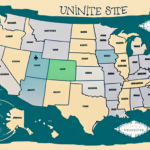Understanding UPS Ground Shipping Rates: Starting at $14.28
Shipping rates are a crucial consideration for businesses and individuals aiming to send packages to various destinations. UPS, one of the world’s largest delivery firms, offers Ground shipping services across the United States, with rates starting at $14.28. This comprehensive guide explores how UPS calculates Ground shipping rates, factors influencing these rates, comparisons with other carriers, and strategies to optimize shipping costs.
How UPS Calculates Ground Shipping Rates
UPS Ground shipping rates are determined by several factors:
- Origin and Destination: The distance between the pickup and delivery locations significantly impacts the rate, following UPS’s zone-based pricing model.
- Package Weight and Size: Heavier and larger packages incur higher shipping costs. Packages classified as “oversize” or “overweight” may attract additional fees.
- Delivery Distance: Longer distances generally result in higher rates due to increased transportation costs.
- Additional Services: Services such as insurance, signature confirmation, and expedited delivery options can add to the overall cost.
UPS also imposes restrictions on certain items. For instance, hazardous materials or live animals are prohibited or require special handling. It’s essential to review UPS’s guidelines before shipping to ensure compliance and avoid additional charges.
Factors That Affect Ground Shipping Rates
Several elements can influence UPS Ground shipping rates:
- Package Weight and Size: Heavier and bulkier packages cost more to ship.
- Delivery Distance: Longer shipping distances increase costs.
- Service Level: Standard shipping is cheaper than expedited options.
- Destination Address: Shipping to rural or remote areas may incur higher fees compared to urban or commercial destinations.
- Seasonal Demand: Peak seasons like holidays can lead to increased rates due to higher demand.
- Special Handling Requirements: Fragile or hazardous items may require additional packaging and handling, increasing costs.
- Fuel Surcharges and Additional Fees: Variable costs like fuel prices can impact shipping rates.
Understanding these factors helps in anticipating shipping costs and making informed decisions to manage expenses effectively.
Comparing UPS Ground Shipping Rates with Other Carriers
Besides UPS, other major carriers offering Ground shipping services include FedEx, United States Postal Service (USPS), and DHL. Each carrier has unique pricing structures, delivery options, and service levels:
- FedEx Ground: Often competitive with UPS in terms of pricing and delivery times, especially for business shipments.
- USPS: Generally offers lower rates for lighter packages but may have longer delivery times and fewer tracking options.
- DHL: More prominent internationally, with competitive domestic Ground rates depending on the service level.
When comparing rates, consider not only the cost but also factors like delivery speed, tracking capabilities, and customer service. For example, while USPS might offer lower rates, UPS and FedEx may provide more reliable tracking and faster delivery options. Utilizing comparison tools and analyzing the specific needs of your shipments will help identify the most cost-effective and efficient carrier for your requirements.
Tips for Reducing Ground Shipping Costs
Implement the following strategies to minimize UPS Ground shipping expenses:
- Optimize Package Size and Weight: Use appropriately sized packaging and eliminate unnecessary weight to lower costs.
- Use Flat-Rate Shipping Boxes: UPS offers flat-rate boxes that can be more economical for heavier items.
- Schedule Pickups in Advance: Scheduling pickups can sometimes qualify you for discounted rates.
- Leverage Special Promotions and Discounts: Keep an eye out for UPS promotions or enroll in UPS programs that offer discounts based on shipping volume.
- Partner with a Third-Party Logistics Provider (3PL): A 3PL can negotiate bulk discounts, provide advanced shipping analytics, and streamline your shipping operations, potentially reducing costs.
- Explore Alternative Carriers: Compare rates with FedEx and USPS to find the most cost-effective option for specific shipments.
- Utilize Shipping Software: Tools like ShipStation or Easyship can automate rate comparisons, label printing, tracking, and manage returns efficiently, saving both time and money.
Implementing these tactics can lead to significant savings, especially for businesses with high shipping volumes.
Understanding Pricing Options for UPS Ground Shipping
UPS Ground offers multiple pricing models to accommodate various shipping needs:
- Standard Model: Based on the actual weight of the package.
- Dimensional Weight: Calculated using the package’s size and weight, often used for larger, lightweight packages.
- Billable Weight: Applied when packages have irregular shapes or sizes, using the greater of the actual or dimensional weight.
Additionally, UPS Ground provides services like insurance and tracking, which can enhance security and visibility but may affect overall shipping costs. Insurance offers protection against loss or damage, while tracking ensures you can monitor your shipment in real-time. Considering these options can help you choose the most appropriate and cost-effective solution for your shipping needs.
Destination also plays a role in pricing. Shipping to residential addresses may incur additional fees compared to commercial deliveries. Remote or rural areas might also result in higher costs due to limited transportation routes. Assessing the destination type can help in accurately estimating and managing shipping expenses.
Estimating Ground Shipping Costs before Checkout
UPS provides various tools to help estimate shipping costs before finalizing your shipment:
- UPS Shipping Calculator: Input package weight, dimensions, destination, and desired shipping speed to obtain an accurate cost estimate. Access it here.
- Shipping Rate Tables and Detailed Rate Sheets: Available on the UPS website, these resources offer comprehensive pricing information based on different criteria.
- Personalized Shipping Consultations: UPS offers consultations to help businesses optimize their shipping strategies, potentially reducing costs and improving efficiency. Contact your local UPS representative or visit the UPS website for more details.
Using these tools can help you plan your shipping budget effectively and avoid unexpected costs at checkout.
The Impact of Delivery Distance on UPS Ground Shipping Rates
The distance between the origin and destination significantly affects UPS Ground shipping rates. Longer distances typically result in higher shipping costs due to increased fuel consumption and transportation time.
To optimize shipping costs for long-distance deliveries:
- Consolidate Shipments: Combine multiple packages into a single shipment to benefit from bulk pricing.
- Use a Third-Party Logistics Provider (3PL): A 3PL can help identify efficient shipping routes and consolidate shipments to reduce costs.
- Plan Ahead: Scheduling shipments in advance can help secure better rates and avoid premium charges during peak times.
It’s essential to balance distance with other factors like package weight, size, and delivery speed to determine the most cost-effective shipping strategy.
Understanding Weight and Size Restrictions for UPS Ground Shipments
UPS Ground imposes specific weight and size limitations to ensure safe and efficient transportation:
- Maximum Weight: 150 pounds per package.
- Maximum Size: 165 inches in length and girth combined (girth is calculated as 2 × (width + height)).
Exceeding these limits can result in additional fees or require alternative shipping methods. Properly measuring and weighing your packages before shipping can help avoid unexpected charges and ensure compliance with UPS regulations.
How to Track Your UPS Ground Shipment and Manage Delivery Updates
UPS offers robust tracking and notification tools to keep customers informed about their shipments:
- Real-Time Tracking: Monitor the progress of your shipment online or through the UPS mobile app.
- Delivery Notifications: Receive updates via email or text messages about your package’s status.
- Proactive Alerts: Get alerted to any delays or changes in your shipment’s status.
Access these tools through the UPS website or mobile app to ensure timely delivery and address any issues promptly.
Common Mistakes to Avoid When Selecting UPS Ground Shipping
To ensure a smooth UPS Ground shipping experience, avoid the following common mistakes:
- Poor Packaging: Inadequate packaging can lead to damaged or lost shipments. Use sturdy boxes and proper cushioning materials.
- Incorrect Labeling: Ensure labels are clear and accurate to prevent delivery errors.
- Selecting the Wrong Service Level: Choose the appropriate service based on delivery speed needs to avoid unnecessary costs.
- Ignoring Restrictions: Verify that your package complies with UPS’s shipping guidelines to avoid prohibited items or additional fees.
- Not Insuring Valuable Items: For high-value shipments, consider purchasing additional insurance to protect against loss or damage.
By adhering to UPS’s guidelines and carefully planning your shipments, you can prevent delays, reduce costs, and ensure the safe delivery of your packages.
How to Negotiate Better Rates with UPS for Frequent Shipments
Businesses with high shipping volumes can negotiate better rates with UPS through the following strategies:
- Demonstrate Consistent Shipment Volume: Higher shipping volumes can leverage better pricing tiers.
- Showcase Financial Stability: A stable financial history can make negotiations more favorable.
- Leverage a Third-Party Logistics Provider (3PL): A 3PL can negotiate on your behalf, utilizing their established relationships and bulk shipping volumes to secure discounts.
- Use Advanced Shipping Analytics: Utilize data to identify cost-saving opportunities and present a strong case for rate reductions.
- Bundle Services: Combining multiple UPS services can provide opportunities for discounted rates.
Engaging directly with UPS sales representatives or through a 3PL can help in securing customized rate agreements that align with your shipping needs.
Pros and Cons of Using UPS Ground as Your Primary Carrier
When considering UPS Ground as your main shipping carrier, evaluate the following advantages and disadvantages:
Pros
- Competitive Pricing: UPS Ground offers reasonable rates, especially for heavier packages and longer distances.
- Reliability: Known for consistent delivery times and dependable service.
- Extensive Network: Wide coverage across the United States, including remote areas.
- Advanced Tracking: Comprehensive tracking options provide visibility into shipment status.
- Additional Services: Options like insurance, signature confirmation, and delivery notifications enhance service quality.
Cons
- Slower Delivery Times: Compared to expedited services, UPS Ground may take longer to deliver packages.
- Additional Fees: Extra costs for services like residential delivery, fuel surcharges, and special handling can increase overall expenses.
- Restrictions on Package Sizes and Weights: Larger or heavier packages might incur additional fees or require different shipping methods.
- Customer Service Variability: Some customers report inconsistencies in customer service experiences.
Assessing these factors in relation to your specific shipping needs will help determine if UPS Ground is the right primary carrier for your business or personal use.
Understanding Insurance Options Available with UPS Ground Shipments
UPS Ground provides several insurance options to safeguard your shipments:
- Basic Liability Coverage: Included with most shipments, offering up to $100 in coverage per package.
- Additional Insurance (Declared Value): Customers can declare a higher value for their packages, providing greater coverage based on the item’s value.
- Liability Protection for Specific Items: Coverage for items like electronics or valuables may require additional insurance.
It’s crucial to understand the terms and conditions of each insurance option to ensure adequate protection. Review the UPS insurance guidelines to choose the best coverage for your shipments.
How to Handle Lost or Damaged Packages during UPS Ground Shipping
Despite careful planning, packages may sometimes be lost or damaged during UPS Ground shipping. Here’s how to handle such situations effectively:
- Track Your Shipment: Use UPS’s tracking tools to monitor the status and location of your package.
- File a Claim: If your package is lost or damaged, promptly file a claim through the UPS website or by contacting UPS customer service.
- Provide Necessary Documentation: Submit proof of the package’s value, shipping receipt, and any relevant correspondence.
- Follow Up: Keep in touch with UPS representatives to monitor the progress of your claim and ensure timely resolution.
- Review Packaging: Assess how the package was handled to prevent future occurrences, and consider improving packaging methods if necessary.
Acting swiftly and providing all required information can expedite the claims process, ensuring you receive appropriate compensation and minimize the impact on your business or personal needs.






